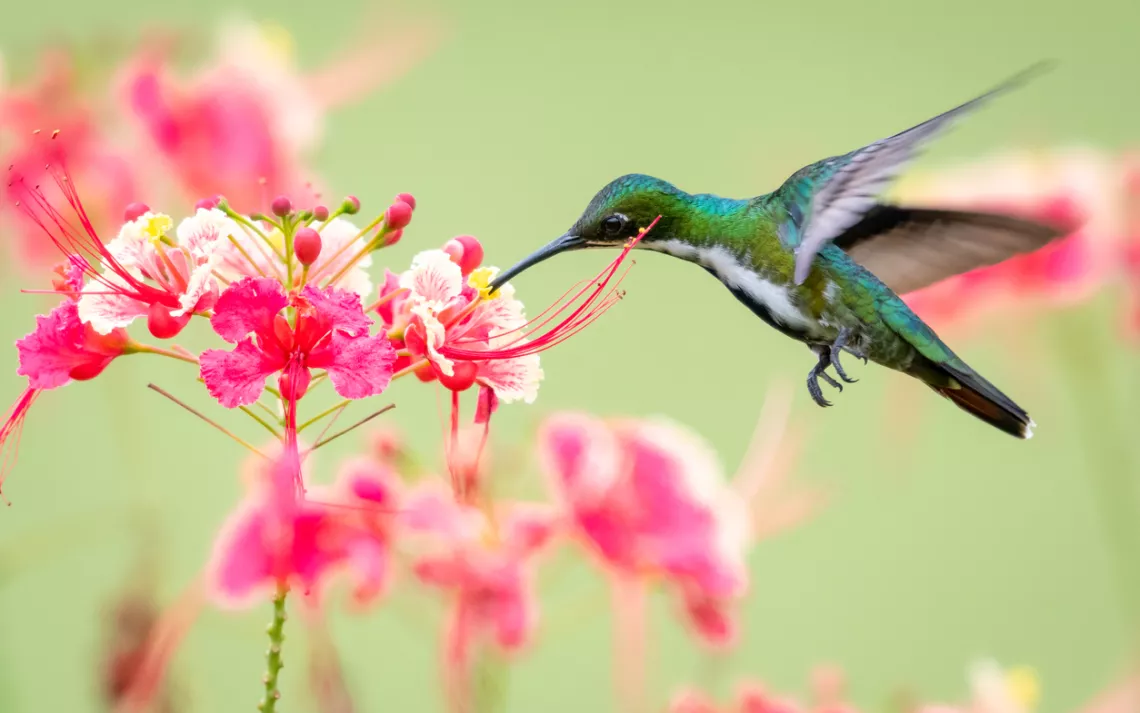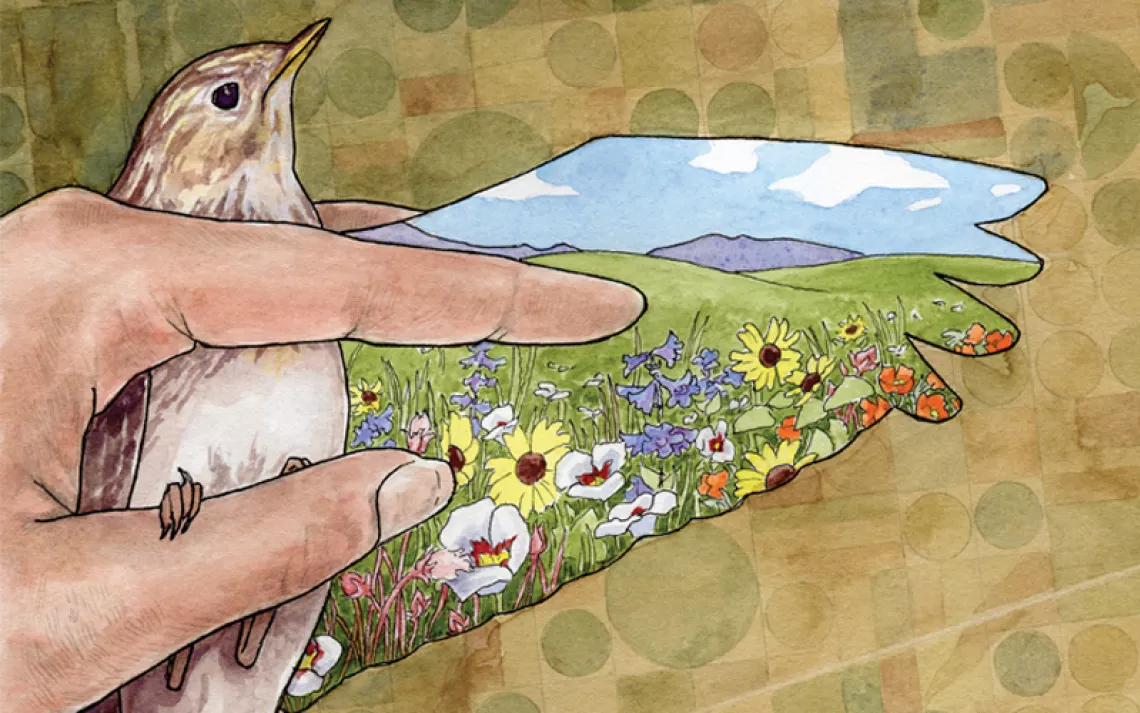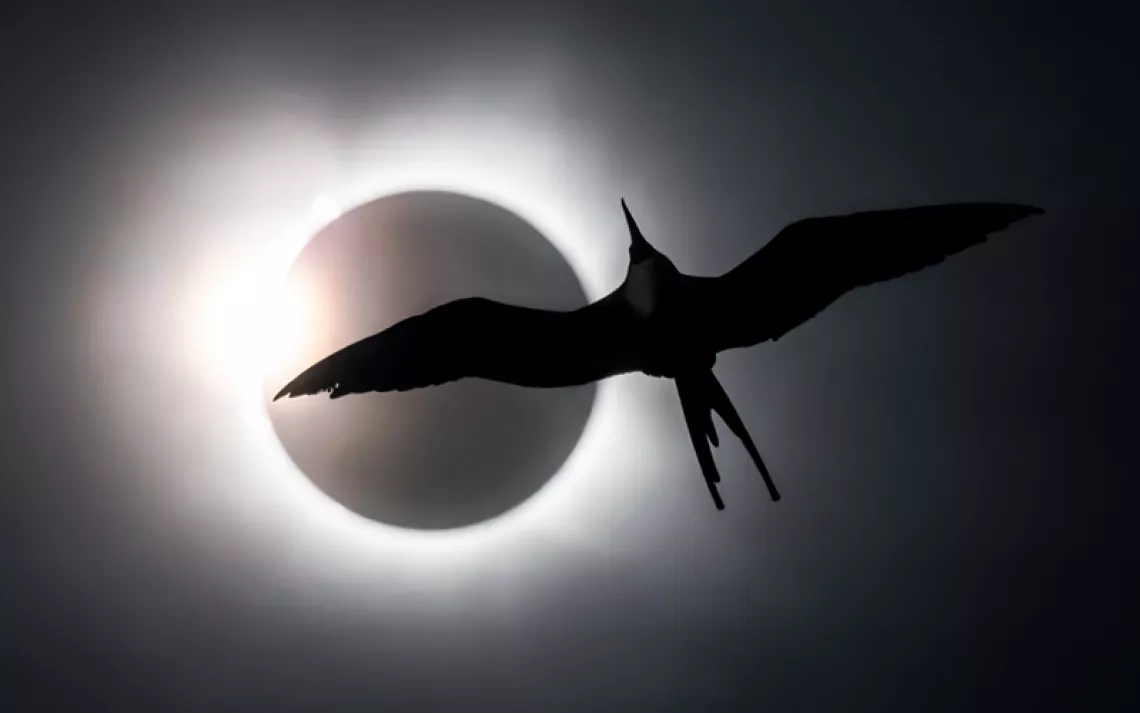10 Unique Hummingbird Havens
10 unique locations to see hummingbirds in North and South America, including places known for their hummingbird diversity and the presence of rare or endangered species.

With their tiny size, astounding speed, and attraction to colorful flowers, hummingbirds have always been a fascinating group of avions for the humans lucky enough to catch a fleeting glimpse of them in backyards or wild places. There are over 300 species of trochilidae, or hummingbird, many of which are endangered or endemic to small areas. While the highest population and species diversity of hummingbirds is found in the equatorial nations of South America — hummers are only native to the Americas — they can be encountered as far north as Alaska and as far south as the tip of Chile.
But where are the best places to spot these charismatic birds? We've listen ten unique locations to see hummingbirds in North and South America, including places known for their hummingbird diversity and the presence of rare or endangered species.
1. Ramsey Canyon Preserve, Arizona, United States
Located within the Huachuca Mountains, Ramsey Canyon is one of the prime locations to see hummingbirds in the U.S. An ecological crossroads between desert and tropics, the mountains that rise from the arid surroundings of this part of southeastern Arizona trap rainfall and create island-like biodiverse areas. Among numerous other plants and animals, the Ramsey Canyon wildlife reserve is home to 15 species of hummingbird. Most notable are the berylline and violet-crowned hummingbirds, which breed in Central America but only migrate as far north as the southwestern United States.
2. Bandelier National Monument, New Mexico, United States
Bandelier park, encompassing an especially biodiverse section of the Parajito Plateau in southern New Mexico, is known by birders as a nesting sanctuary for broad-tailed and black-chinned hummingbirds. Two other hummingbird species, the Calliope and Rufous, can also be spotted seasonally and sporadically among Bandelier's cliffs, valleys, and streams. Like the other hummingbird havens of the U.S., Bandelier's proximity to Mexico makes it a migration destination for hummers and other tropical birds.
3, Cabrillo National Monument, California, United States
Surrounded by city and sea, Cabrillo National Monument is home to marine and mammalian wildlife, as well as birds. Along with Arizona and New Mexico, California is a winter destination for migratory hummingbirds, many of which reside in this protected area south of San Diego. Anna's hummingbird, a species known for its complex song and the stunts performed by its males, is a year-round, nesting resident. But the National Monument is also a stopover for migratory hummers; in April, birders flock to the area to observe the Calliope hummingbird, the smallest bird in the United States.
4. Rio Grande Valley, Texas, United States
Along with the other southern border states, Texas has its own claim to hummingbird habitat. The state's Rio Grande Valley, a center of annual hummingbird migration, is an excellent region to spot the buff-bellied hummingbird and the iconic ruby-throated hummingbird. But the valley is also home to some hummingbirds who have crossed the border: persistent birdwatchers might catch a glimpse of "vagrant hummingbirds," individuals belonging to tropical species that have wandered north of their native habitat.
5. Chichen Itza, Mexico
Moving south, we finally get to the heart of hummingbird habitat: the Yucatan peninsula. Many hummingbird species that can be spotted in the United States winter and breed here, and one of the best places to find them is Chichen Itza. This landscape of jungles and Mayan ruins is not only a UNESCO World Heritage site, it's also prime hummer territory. Eco-tourists know Chichen Itza as a haven to a variety of wildlife; it's home to at least nine species of hummingbird that have as much relevance to local human history as to local ecology.
6. La Paz Waterfall Gardens, Costa Rica
One of the most famous places in the world to go hummer watching is at Costa Rica's La Paz Waterfall Gardens, a privately owned reserve that encompasses forests teeming with wildlife along with the waterworks that give the park its name. A staggering 26 species of hummingbird can be seen at the park at any given time, the highest level of hummingbird diversity in one location ever recorded and more than half of Costa Rica's 50 hummingbirds. Because of the island's mix of tropical lowlands and cloud forest habitat, hummers browse its diverse flora year-round.
7. Monteverde Cloud Forest Biological Reserve, Costa Rica
A symbol of Costa Rica's biodiversity, Monteverde contains a full 2.5% of all species on Earth! This protected cloud forest also boasts fourteen species of hummingbird, all viewable at close range at the park's Selvatura Hummingbird Garden. The reserve is a shining example of sustainable tourism, protecting its residents from the side-effects of human visitation through the use of local and biodegradable products and educating the public about the vulnerability of endemic hummingbirds to habitat destruction.
8. Rocklands Bird Sanctuary, Jamaica
Established by the late Lisa Salmon, known as "the bird lady" in birding communities worldwide, the Rocklands Bird Sanctuary protects a forested area near Jamaica's Montego Bay. The sanctuary features a feeding station which caters to fifteen hummingbird species, some of which are so tame that they will sit on the fingers of visitors as they are hand-fed. Naturally, this attracts a host of birders and ecotourists, who help support the sanctuary and its mission of conservation. Notable hummingbird species include the red-billed streamertail and the vervain hummingbird.
9. Yanacocha Reserve, Ecuador
Ecuador is home to the largest amount of hummingbirds and hummingbird species in the world, with at least 135 species sighted within the country's borders. But the Yanacocha Reserve, nestled in the Andean cloud forest northwest of the capital city of Quito, was originally created to protect just one: the black-breasted puffleg, a critically endangered species of hummingbird endemic to the slopes of the Pinchincha volcano. Visitors to Yanacocha can see this and other hummingbirds up close as they browse the park's feeders before a backdrop of the misty, forested slopes of one of the most biodiverse ecological regions on Earth.
10. Choctomal, Peru
Like Ecuador, Peru boasts plentiful cloud forest habitat and an astounding variety of hummers that call it home. But the indigenous town of Choctomal in the Chachapoyas region of northern Peru is one of the few places in the country where it is possible to spot the critically endangered marvelous spatuletail. This bird is named for its striking blue tail feathers, and is endemic to Peru's Huembo Reserve. The Choctomal Lodge is a renowned spatuletail-spotting destination, and a gathering place for birdwatchers, conservationists, and natives alike as they struggle to protect this species and the rest of the cloud forest's wild bounty.
11. And our unofficial eleventh hummingbird haven? Your backyard!
Hummingbirds live across the lower 48 states and southern parts of Alaska and Canada. North American residents can make their own hummingbird gardens with native nectar plants or artificial feeders. Be sure to check with your local Audubon Society chapter or another credible organization for specific information on the hummingbird species you can attract, as well as the best plants to use in your region. Hummingbird gardens make a great addition to herb and organic gardening projects. Happy birding!
 The Magazine of The Sierra Club
The Magazine of The Sierra Club



